#celebrating the victory of light over darkness in the year of our pandemic three does feel like radical optimism
Text

rhonda or i ended a seasons' long glitch and managed to want a sunflower on a saturday, when i can purchase one from my favorite korean donut shop, instead of wanting one on a sunday, when i cannot
also, happy saturday, imaginary constructs!

#saturdays#sunflowers#wack wallop#wandering#psammophonia#sister smith's lucky bamboo gaming parlor#celebrating the victory of light over darkness in the year of our pandemic three does feel like radical optimism#pandemic era#fourth summer
31 notes
·
View notes
Text
How to Grow a Pandemic Garden
There are all kinds of reasons that people get into gardening, most of them quite practical. Maybe you need a hobby, and like being surrounded by green things. Maybe you want to become more self-sufficient in general, and harbor homespun dreams of spending long days canning, pickling, and preserving your harvest so you can crack open a jar of summer during the cold winter months. Maybe you’re looking to pull back from the cruel capitalist churn of food production and farm worker exploitation in this country. Maybe you just want to spend less money at the grocery store, or to make it easier for yourself and your neighbors to avoid it altogether.
Or maybe the current crisis has you thinking more in the long term. The coronavirus pandemic continues to disrupt food supply chains, and unemployment numbers have soared into the stratosphere. Farmers unable to sell their crops are letting tons of produce rot in the fields (despite an urgent need from food banks), and grocery store workers fear the potentially deadly consequences of reporting to work. Without being fatalistic, it might not be a bad idea to take steps now that ensure you’ll have access to fresh produce a month or two from now.
During World Wars I and II, ordinary citizens in the U.S. (as well as a number of other countries) were encouraged to plant so-called “Victory Gardens” in order to take pressure off the straining food supply and spice up their own meager government rations. The humble backyard garden served them well then, and those of us alive now could benefit from a return to the practice—ideally without the racist, imperialist baggage that came with the second wave of U.S. victory gardens. When thousands of Japanese farmers were thrown into internment camps by the U.S. government during WWII, the food supply suffered but California agribusiness giants secretly celebrated. With their highly efficient farming methods and close-knit communities, Japanese immigrants had been a threat to the American farms’ profits, and their farms were lost alongside their freedom in an ensuing government land grab. The growth of victory gardens ties directly into that shameful episode, so for the sake of this piece, let’s just stick with “garden” for our purposes here (or “quarantine garden” if you’re really leaning into the branding).
Growing herbs on your windowsill isn’t doing it for you anymore, and those baleful houseplants peeking out at you from various corners around the apartment aren’t exactly pulling their weight, either. You’ve decided you want to take that extra leap and start your very own garden, so, let’s take stock. Say you live in an apartment in a major city, can afford to spend a few bucks on supplies, and have a little extra space to play around with. We’re not talking full-on backyard (in this economy? please) but you’ve got a solid few square feet of outdoor space that you’ve decided you want to draft into your personal war against free time. You’re ready for an upgrade.
That’s great, but there are a few things you need to consider before you dig in, pun absolutely intended.
Where Should I Plant a Garden?
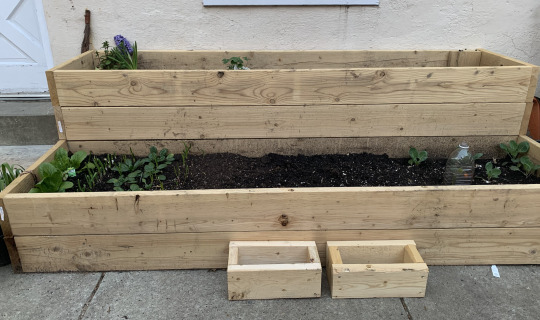
When planning out your new kitchen garden, you’ve got to keep the old real estate maxim “location, location, location” in mind. When deciding what is going to go where, you’ll want to pick out the sunniest spot possible. Vegetable plants are the opposite of intimidating goth teens in that they love the sun and crave your attention.
If you’re working with a fire escape or a stoop, you’ll probably be in good shape, but if you’re staking out a section of a shady backyard area, it’ll be a little harder to coax your crops into cooperating. You’ve also got to consider potential weather conditions. The last thing you want is for your small leafy sons to drown the next time it rains because you planted them in a weird slopey corner of the yard, or for them to fall to their deaths from the fire escape on a windy day because your dumb ass balanced them on a step. Find a nice, level spot that isn’t going to betray you the first time it rains.
How Much Sunlight Will My Garden Need?
Most plants require at least six hours of direct sunlight per day to thrive, and the more sun they get, the bigger, happier, and healthier they grow. Leafy greens like lettuce, spinach, kale, chard, and herbs like cilantro, thyme, and parsley can handle a little more shade, and root vegetables like carrots and radishes can run on only four hours if needed, but most of the beloved staples you’re going to want to grow—tomatoes, cucumbers, peppers, beans, squash, corn, basil, rosemary—are going to want to soak up that sun.

What if you don’t live somewhere sunny? You need to get familiar with your hardiness zone (which sounds like some sort of cursed Crossfit spin-off, but is actually a means by which gardeners can determine what kind of plants will thrive in their particular area during cold weather). Seed packets and live plants will note their zones on the package; if a range of zones is provided (for example, if zones 4-9, is indicated, the plant is good to go in zones 4, 5, 6, 7, 8, and 9). Also, use your common sense; while I appreciate your millennial moxie, you’re probably not going to be able to grow that avocado tree in Maine.
What Should I Grow in My Garden?
Now that you’ve got all that figured out, you need to decide what you actually want to grow in your garden. This year, we spent hours paging through seed catalogs trying to settle on the perfect heirloom varieties, but you don’t have to be that precious about it. Think about what you want to eat, what you like to cook with, and what you’d like to have on hand just in case. If you’re looking to harvest regularly or feed more than a few people, go with high-yield plants like tomatoes, cucumbers, zucchini, peas, and salad greens like lettuce and spinach.
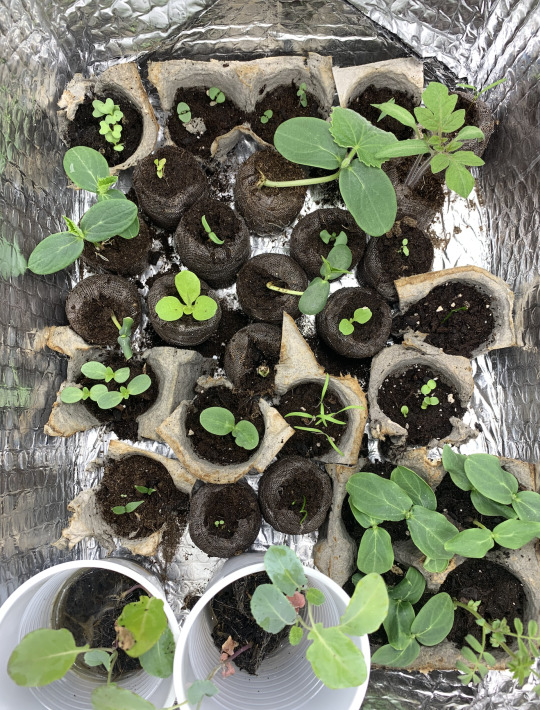
Herbs are always a good bet and play well with other plants, though you’ve got to watch out for mint—much like the U.S. itself, a mint plant will choke out the competition and colonize every inch of space around it if left to its own devices. You can achieve a nice balance of function and form by growing pretty flowering herbs like lavender, chamomile, yarrow, and borage. These will have the added benefit of attracting bees and butterflies, which is as adorable as it is necessary to keep your plants well-pollinated. (Tip: If you’re going to be using containers, look for varieties labeled “compact,” “space saver,” or “bush;” these mini-versions of popular garden staples are bred to take up less space than usual, leaving you more room to maneuver).
Where Can I Get Plants For My Garden?
Do you want to start from scratch and buy seeds, or would you rather pick up an armload of baby plants from your local garden center? Are you going to throw in a few wild cards, like those spring onions you’ve been idly regrowing on the countertop?
If you’ve never tried to grow anything before (or have, and found yourself to be the unhappy possessor of a black thumb), it might be a good idea to start off with a few store-bought (or gifted) plants to get your confidence up before you tackle anything more demanding. You can try out some of those vegetable regrowing hacks that are always floating around Instagram, but the only one that’s ever reliably worked for me is the spring onion trick (where you simply place the white bulb roots-down in a cup of water, and watch as they regenerate into full-grown onions again).
How Do I Start Seeds Indoors?
In my own personal experience, starting seeds inside is a pain in the ass, but depending on what I’m trying to grow, it’s often a necessary evil. Some plants are tricky, and can’t be directly sown (i.e. planted directly in the soil outside). Instead, they need to be “started” indoors and kept inside until they’re strong enough to withstand the elements.
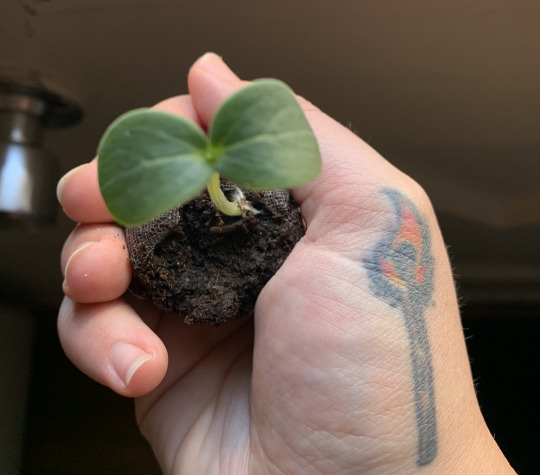
There are a number of ways to do this and endless tutorials online, but I’ve had the best luck so far with the following method. Take a cardboard egg carton, fill the little cups with potting soil, and plant each cup with three or four seeds. Keep the soil damp and stow the carton in a warm, dark place until you see sprouts, then move the babies under a grow light or under a sunny window, and let them get their strength up. Once they’ve had a week or so to grow, start moving them outside for a few hours each day to “harden” them, or get them used to the changes in temperature. Gradually increase the time spent outside for the next seven to ten days, until you’re ready to transplant them. You can then cut the egg cartons apart and plant the individual cups directly in the soil, and welcome them into their new home by giving them plenty of water. (Your mileage here may vary; seeds can be finicky little dicks, and I’ve already had to re-start like 50 of them this year. Don’t give up!).
What Are Raised Beds, and Does My Garden Need Them?
Once they’re all grown up and ready to move out, are your plants going to live in pots and containers, or are you dreaming bigger? If you’ve only got a few feet available, a couple of big, deep containers will be your best bet here. As a bonus, containers are especially good for vertical gardening. Adding a trellis, wire cage, or other support system gives vine-y plants like tomatoes, cucumbers, squash, sweet potatoes, and beans room to climb, which is handy when space is at a premium (and if you’re feeling really ambitious, you can try to train your vines to wrap around your balcony or fire escape).

My other half (who has a background in agriculture and is fact-checking this over my shoulder as I write it) got a little fancy with our garden this year and built some raised beds. A raised bed is basically a flat box that sits on top of the soil (or concrete), and they’re great for beginner gardeners because you can control important variables like soil quality, drainage, pests, and weeds. They don’t need to be expensive, and are pretty easy to build; there are millions of tutorials on YouTube, and you can make them out of pallets or cheap lumber. (You can also buy ready-made ones, but those are needlessly expensive and I promise you can just do it yourself for a fraction of the cost). Ours are 8’ x 4’ due to the shape of our weird little front yard, but you can go much bigger or smaller depending on your situation. If you have the space for them, raised beds are a great option for city gardens, or in places where the soil is contaminated or otherwise inhospitable.
What Kind of Soil Do I Need For My Garden?
The next step is choosing the right soil for what you’re looking to grow. Different plants thrive in different kinds of soil, but basically any soil you’re going to encounter can benefit from adding compost to it, so throw a few bags of that into your shopping card before you leave Home Depot (or start making your own). Some vegetables like carrots, cucumbers, garlic, tomatoes, onions, cauliflower, and sweet peppers also prefer slightly acidic soil (so do most berries!); luckily, there are a number of ways to up the dose of acid in your soil, some store-bought and some DIY. I sometimes add used tea leaves or coffee grounds to the soil around these plants, and you can also mix two tablespoons of vinegar into a gallon of water and use that for an easy fix. You can also just buy soil with a higher acidity level. (“Just buy some” is usually an option for most things when it comes to gardening, but we try to keep things as DIY and organic as possible in our garden, because this shit can get expensive).
So now you’ve got your space scoped out, you’ve got your plant babies at the ready, you’ve got your containers set up, you’ve got a bunch of dirt locked and loaded, and you’re feeling good about your setup. It’s finally time for the fun part—planting! Make sure to make a nice deep pocket in the soil to place the plant down into, fully cover the roots, and to water them thoroughly once they’re settled. Good job! You have a garden now.
How Do I Keep My Garden Alive?
It’s always a good idea to read up on the types of vegetables you’ve planted beforehand so you understand how much water each kind will need each day after that (again, don’t drown your babies!). Familiarize yourself with each plant’s needs, and settle in for the final, hopefully most fruitful chapter of your garden journey: doing your best to keep the damn things alive. It will require care, effort, and somewhat constant vigilance, but it’ll be worth it. If you spot any stray weeds, remove them; if you see a suspicious bug or odd colorations on a plant’s leaves, Google them and take care of it. I can guarantee that for any garden problem you encounter, someone else has already written a how-to guide on how to fix it.
Don’t pick things before they’re ripe, or let veggies rot on the vine. Be kind to your plants, even the ones that get droopy or don’t produce as well; they’re doing their best. Most importantly, once you start harvesting your bounty, share the abundance with your friends and neighbors (from a safe distance). Remember, nothing tastes as sweet as mutual aid.
How to Grow a Pandemic Garden syndicated from https://triviaqaweb.wordpress.com/feed/
0 notes
Link
One year ago on Monday, hundreds of millions of people the world round reacted with horror to images of the cathedral church of Our Lady of Paris burning. She did not collapse, as some feared she would. But it was announced with regret that throughout Holy Week and on Easter Sunday, Notre Dame would be empty for the first time since the days of the Revolution.Now nearly all of our churches appear empty. I say "appear" because in many of them there will in fact be priests offering the one acceptable sacrifice, in union with the angels and saints. But it is almost certainly the case that fewer people will attend Mass on Sunday than on any Easter in more than a thousand years.It is difficult to say exactly when the present reality no longer seemed shocking. I cannot be the only person who feels as if the last few months have been mostly indistinguishable. In January and February, a single day did not pass upon which all five members of our family were in good health. Then on my birthday, February 22, our daughter, Winifred Flosshilde, was stillborn. On Ash Wednesday she received Catholic burial at the diocesan cemetery. The following Sunday my wife was still recovering from Winifred's delivery and we did not attend Mass. The next week we entered our parish church and found it somewhat barer than usual; the following Sunday, by which time the obligation to attend Mass had been waived in our diocese, the church looked only somewhat emptier. Our bishop was the last in the United States to suspend public Masses. After that, the church doors remained unlocked. Opening them in order to confess my sins was an experience I shall never forget: a handful of masked women and teenagers hiding in corners like suspicious criminals, all of us praying before the exposed Body of Christ. Beneath the statue of St. Joseph, a handmade system of green and red light bulbs indicated whether the adjacent storage room was empty for the next penitent. It was of a piece with empty streets and empty parks, miserable weather, an atmosphere of relentless dread that many of us will no doubt refer to as "the long Lent." These have been the strangest and most miserable three months of my life.Why then do I now find myself resisting the urge to be giddy? I am tempted to say it is because I know that sooner or later all of this will come to an end, that out of the darkness we will emerge with our own candles, from the digital cold to the warmth of human affection and communion. But the eventual end of the pandemic and the return of normal human social relations, including the resumed public celebration of Mass, is only a proximate cause. The joy I find building in myself, quietly but undeniably, transcends the gloom of recent days.It does not, however, transcend bodies. The significance of this fact cannot be overstated. It is the supreme truth of the Christian religion that our faith is grounded not in anagogic speculations but in the reality of flesh and blood, the flesh and blood of a victim who won a victory, total and final, over the forces of sin and darkness, a human sacrifice who was Himself a sacrificing high priest, a non-citizen peasant who was king of all worlds.Christianity is not a matter of privately affirming certain propositions. The Church is herself a society, both natural and supernatural, a society of human believers whose shared joy is the affirmation of a truth. This truth is, reduced to its barest essence, that a certain body which ought to have been in a tomb was sought and found elsewhere. What this meant was a riddle to which only a few clever women guessed the answer immediately.We too must stand, like St. Mary Magdalene and her companions, before an emptiness and see beyond it a great light and a body, one both like and radically unlike that for which they had been seeking. This is the Resurrection, the hope of Easter, which must be commemorated with empty churches in spite of, nay because of, the fact that it is founded upon the realization that emptiness means not an absence but the presence of something for which we have longed without knowing it our entire lives.More stories from theweek.com 5 radically funny cartoons about the end of Bernie 2020 Coronavirus and the mystery of St. Mark's Easter story Sting, Jimmy Fallon, and the Roots perform 'Don't Stand So Close to Me' remotely, creatively
from Yahoo News - Latest News & Headlines https://ift.tt/3caORpr
0 notes
Quote
One year ago on Monday, hundreds of millions of people the world round reacted with horror to images of the cathedral church of Our Lady of Paris burning. She did not collapse, as some feared she would. But it was announced with regret that throughout Holy Week and on Easter Sunday, Notre Dame would be empty for the first time since the days of the Revolution.Now nearly all of our churches appear empty. I say "appear" because in many of them there will in fact be priests offering the one acceptable sacrifice, in union with the angels and saints. But it is almost certainly the case that fewer people will attend Mass on Sunday than on any Easter in more than a thousand years.It is difficult to say exactly when the present reality no longer seemed shocking. I cannot be the only person who feels as if the last few months have been mostly indistinguishable. In January and February, a single day did not pass upon which all five members of our family were in good health. Then on my birthday, February 22, our daughter, Winifred Flosshilde, was stillborn. On Ash Wednesday she received Catholic burial at the diocesan cemetery. The following Sunday my wife was still recovering from Winifred's delivery and we did not attend Mass. The next week we entered our parish church and found it somewhat barer than usual; the following Sunday, by which time the obligation to attend Mass had been waived in our diocese, the church looked only somewhat emptier. Our bishop was the last in the United States to suspend public Masses. After that, the church doors remained unlocked. Opening them in order to confess my sins was an experience I shall never forget: a handful of masked women and teenagers hiding in corners like suspicious criminals, all of us praying before the exposed Body of Christ. Beneath the statue of St. Joseph, a handmade system of green and red light bulbs indicated whether the adjacent storage room was empty for the next penitent. It was of a piece with empty streets and empty parks, miserable weather, an atmosphere of relentless dread that many of us will no doubt refer to as "the long Lent." These have been the strangest and most miserable three months of my life.Why then do I now find myself resisting the urge to be giddy? I am tempted to say it is because I know that sooner or later all of this will come to an end, that out of the darkness we will emerge with our own candles, from the digital cold to the warmth of human affection and communion. But the eventual end of the pandemic and the return of normal human social relations, including the resumed public celebration of Mass, is only a proximate cause. The joy I find building in myself, quietly but undeniably, transcends the gloom of recent days.It does not, however, transcend bodies. The significance of this fact cannot be overstated. It is the supreme truth of the Christian religion that our faith is grounded not in anagogic speculations but in the reality of flesh and blood, the flesh and blood of a victim who won a victory, total and final, over the forces of sin and darkness, a human sacrifice who was Himself a sacrificing high priest, a non-citizen peasant who was king of all worlds.Christianity is not a matter of privately affirming certain propositions. The Church is herself a society, both natural and supernatural, a society of human believers whose shared joy is the affirmation of a truth. This truth is, reduced to its barest essence, that a certain body which ought to have been in a tomb was sought and found elsewhere. What this meant was a riddle to which only a few clever women guessed the answer immediately.We too must stand, like St. Mary Magdalene and her companions, before an emptiness and see beyond it a great light and a body, one both like and radically unlike that for which they had been seeking. This is the Resurrection, the hope of Easter, which must be commemorated with empty churches in spite of, nay because of, the fact that it is founded upon the realization that emptiness means not an absence but the presence of something for which we have longed without knowing it our entire lives.More stories from theweek.com 5 radically funny cartoons about the end of Bernie 2020 Coronavirus and the mystery of St. Mark's Easter story Sting, Jimmy Fallon, and the Roots perform 'Don't Stand So Close to Me' remotely, creatively
from Yahoo News - Latest News & Headlines https://ift.tt/3caORpr
http://newslegendry.blogspot.com/2020/04/empty-churches-and-empty-tomb.html
0 notes
Text
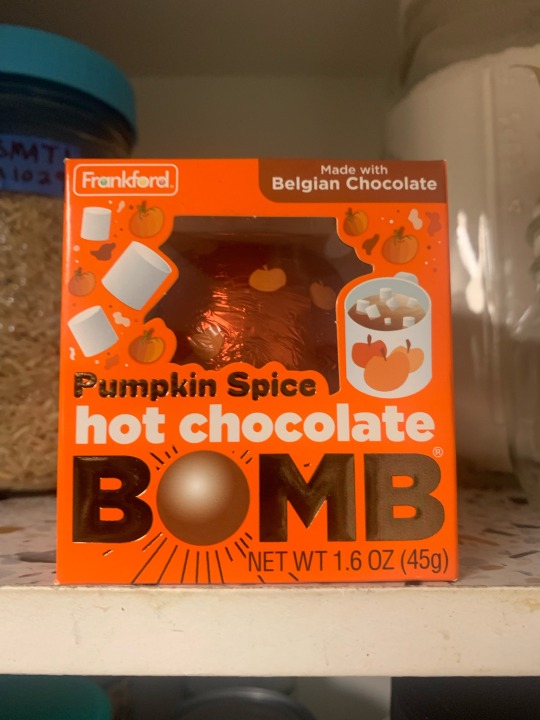
i settled on paddington two for tonight's movie. also, i still don't like pumpkin spice beverages but i gave it a shot
my bedroom wall neighbor with the artisanal ice business has shifted from full volume breakup metal to moderate volume twangy cheatin' songs. this feels like a step backwards from a grief perspective but progress from a neighbor perspective
happy holiday eve imaginary constructs!
#celebrating the victory of light over darkness in the year of our pandemic three does feel like radical optimism#pandemic era#third winter#the bombogenesis#neighbors#paddington two#end of message
29 notes
·
View notes
Text

boba hates diwali fireworks more than labor day fireworks but she hates them less than fourth of july fireworks
boba doesn't growl but she has a "disappointed with your behavior" look that will make you volunteer to go to your room and think about what you have done
i still haven't found a mask to go with my gorilla suit. i want a white easter bunny mask with tall ears, but i will take whatever the river provides
finn and i are trying to schedule a tasting of the new buffalo chicken mac and cheese pizza that just came out. we like to text each other about cargo spills on the interstate and also try out ridiculous pizzas. maybe on thursday, after she gets of work, but her truck has been acting up so we are still in pencil
my newish bedroom wall neighbor is nice and more importantly loud and quiet in a compatible way. i am almost absolutely certain that supporting herself with the "selling artisanal ice to buckhead bars business that she started earlier this year," is code for trust fund, but i am judging myself for even thinking about it
i found a new die for my jar. the first one in a long time, but that is another post
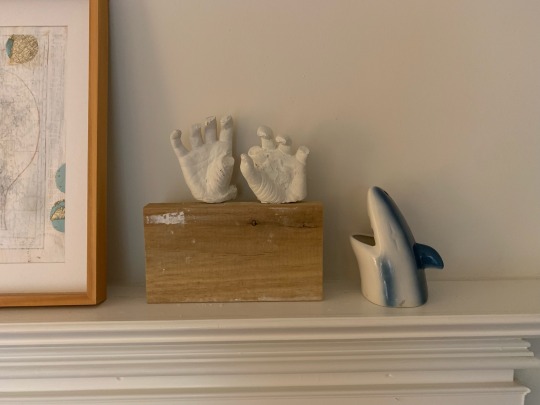
#you cant put things on a#mantle#mantels#cast iron#crows#cursed art projects#tiki#sharks#chaos#disorder#entropy#creative distruction#fireworks#celebrating the victory of light over darkness in the year of our pandemic three does feel like radical optimism#ygg#i like the sound of glass when it smashes#buffalo chicken mac and cheese#pizza#north fulton county#georgia
33 notes
·
View notes